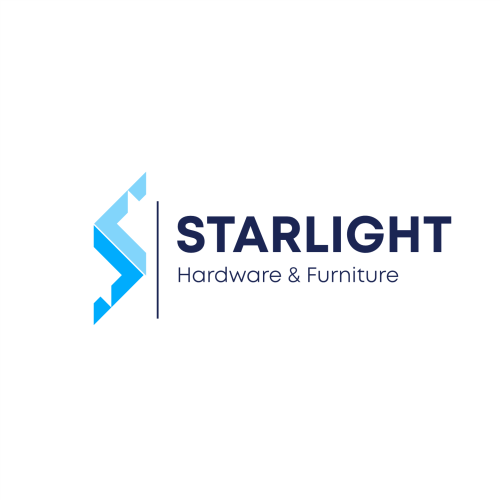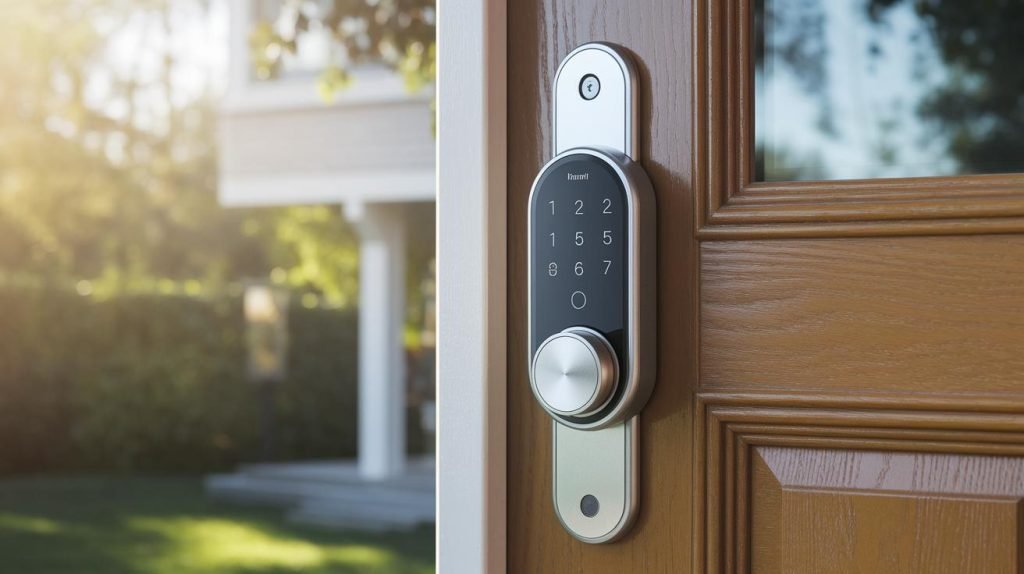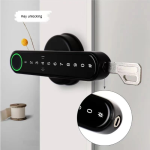Ever thought a solid deadbolt could keep every intruder out? Burglaries happen every 30 seconds in the US. Suddenly, your old brick-and-mortar lock feels a little helpless. And that’s where smart locks step in.
These anti-theft guards stay silently on duty. They’ve got drill-resistant cylinders (tough metal rings that stop drill bits). They send encrypted wireless data (scrambled messages no hacker can crack). And if someone pokes around, a tamper alarm blares a siren.
All these smart defenses team up to seal weak spots and scare off unwanted guests. You’ll see a soft LED glow and hear a reassuring click when it locks. Solid.
Ready to upgrade your front door? Here are five top smart-lock models that deliver real peace of mind at home.
Core Security Features of Anti-Theft Smart Locks for Homes
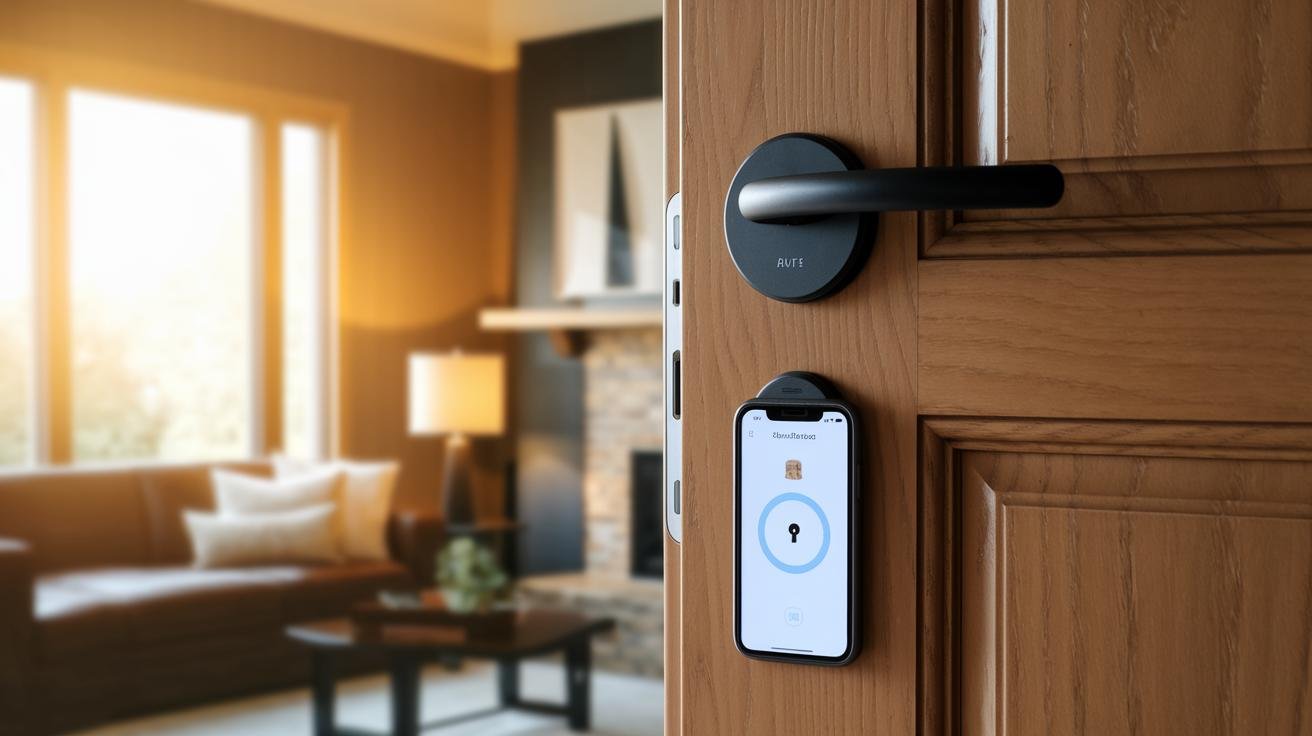
Smart locks need a solid metal faceplate and a drill-resistant cylinder (a tough part that stops drills). They also need secure wireless data encrypted end-to-end (scrambles signals from your phone to the lock). App-driven controls let you lock or unlock your door from anywhere. And when a lock has UL 294 compliance or BHMA approval, you know it’s stood up to tough tests.
- Secure wireless access with end-to-end encryption (scrambles data to keep hackers out)
- App-driven remote lock/unlock (control your door from anywhere)
- Tamper-alarm detection with audible siren (alarm sounds if someone messes with the lock)
- Anti-pry shield and drill-resistant cylinder (tough metal parts to stop prying or drilling)
- UL 294 and BHMA-certified (proof it passed strict security tests)
- Two-factor authentication and guest code expiration (extra login security and time-limited codes)
- Door-position sensor for auto-lock (tracks if your door is open or closed and locks it automatically)
- Backup mechanical key override (old-school key in case batteries die)
These defenses work together to give you real peace of mind. A tamper alarm can scare off intruders before they even try. And auto-lock routines with a door-position sensor keep your door from ever sitting unlocked. Two-factor authentication plus time-limited codes mean you get keyless freedom without risking your security.
And if your lock ever loses power, a backup mechanical key override keeps you in charge.
Fortress.
Less like an open target.
Electronic Deadbolt and Certification Comparison for Home Smart Locks
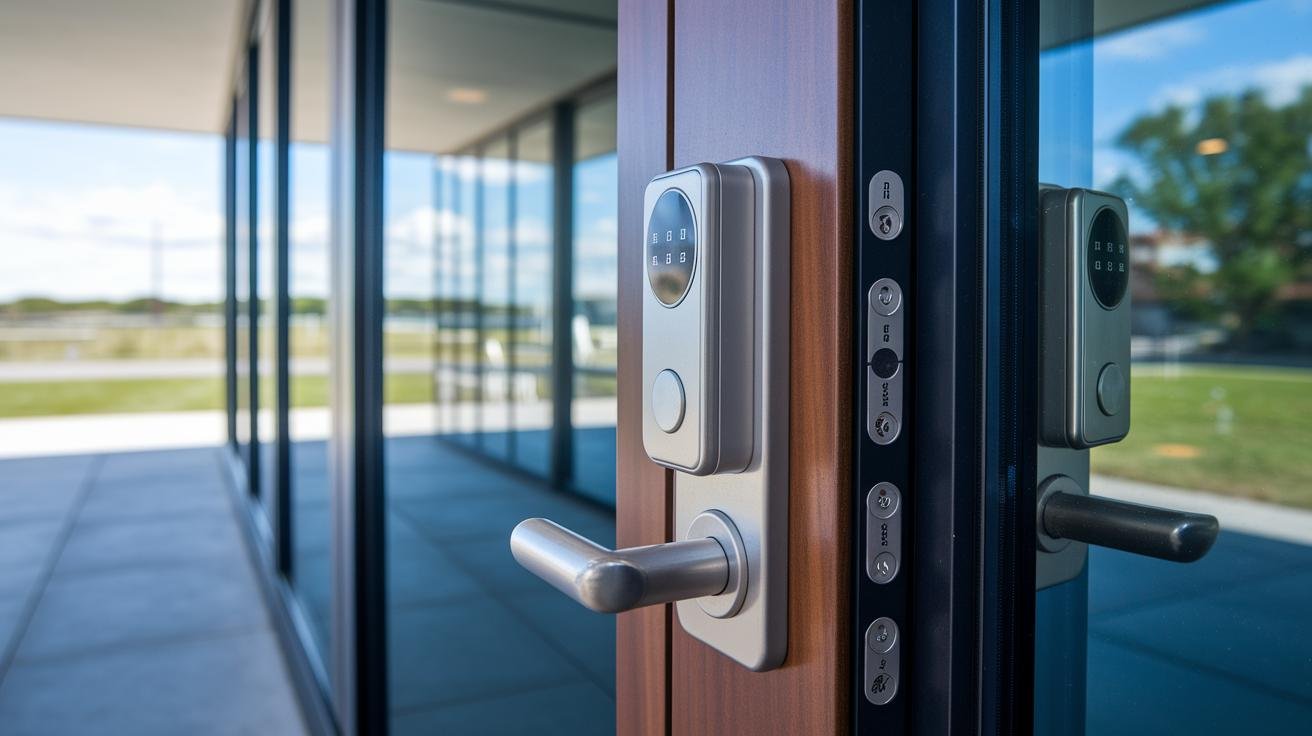
When you shop for an electronic deadbolt (a powered lock for keyless entry), you want real strength. You want the smooth metal faceplate, the reassuring click, and proof it can handle a break-in attempt.
ANSI grades show you how strong a lock is. Grade 1 is like a linebacker on your door, commercial-strength break-in resistance. Grade 2 fits most homes with solid security. Grade 3 offers basic protection, better than a simple mechanical lock.
UL certification (a safety test by Underwriters Laboratories) means the lock survived hard knocks, drilling, and impact tests. Want to know a secret? UL testing’s like a lock boot camp. And a BHMA AAA rating (the top mark from the Builders Hardware Manufacturers Association) tells you it passed cycling tests, finish checks, and has a bump-proof cylinder (a cylinder that resists bump key attacks) plus an anti-pick guard (a shield that blocks picking tools).
| Model | ANSI Grade | BHMA Rating | Certification Notes |
|---|---|---|---|
| Schlage Encode Smart WiFi Deadbolt | Grade 1 | AAA | Built-in alarm, 3″ security screws, drill-resistant build |
| Yale Assure Lock 2 | Grade 2 | AA | All-metal housing, DoorSense sensor, physical keypad and keyway backup |
| Aqara Smart Lock U100 | Grade 3 | A | Top fingerprint reader, hub-dependent Wi-Fi, six-digit PIN lockout |
Choosing a higher-grade lock means fewer weak spots and tougher break-in resistance.
Grade 1 locks give a reassuring click you can count on. They stop most forced-entry attempts.
Grade 2 models still hold strong for family homes.
Grade 3 lifts you above basic security.
Over 10,000 smart locks installed worldwide.
Wireless Connectivity and Mobile App Control in Anti-Theft Smart Locks
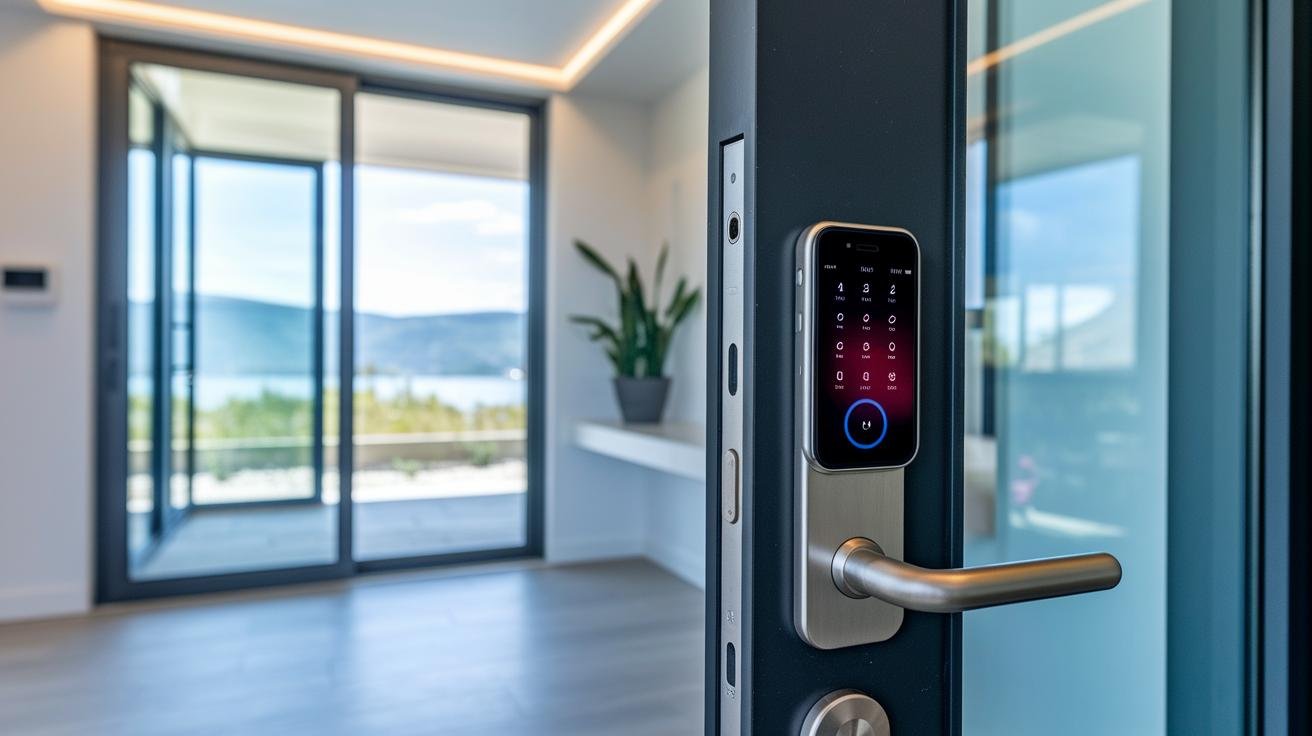
Wireless connections let your lock join your digital life. You can set geofencing auto-lock (auto-lock/unlock based on when you leave or arrive) to work on autopilot. Um, it clicks shut behind you the second you walk away and then unlocks before you even reach for the handle. Need a temp code? The smart lock with app control has you covered, and you can peek at lock logs from anywhere.
Wi-Fi and Hub-Based Integration
Some locks have built-in Wi-Fi (wireless network) so they talk to the cloud without a hub. Take the Schlage Encode Smart WiFi Deadbolt. It skips the hub and sends real-time notifications when someone locks or unlocks. The companion app pushes firmware updates (software upgrades built into the lock) automatically, patching security holes without you lifting a finger.
In hub-based models like the Aqara U100, you plug the lock into a Zigbee (mesh network protocol) or Z-Wave (smart home protocol) hub. This setup blends local network privacy with cloud storage security seamlessly. You still control your lock from anywhere, while keeping your home network private.
Bluetooth, Z-Wave, and Zigbee Protocols
Bluetooth Low Energy (BLE) lets your phone unlock the door up close, like swiping a credit card. It’s perfect when you have no internet. But range can drop off after about 30 feet.
Z-Wave (mesh network protocol) and Zigbee (another mesh network protocol) pass signals device to device, covering your whole home. Many locks can switch to Bluetooth if the hub goes down. That way you keep local control and avoid lockouts.
Balance. Fuss-free access with tight security. Pick a lock that feels just as solid online as it does on your door. Solid.
Installation Guide and Door Compatibility for Anti-Theft Smart Locks
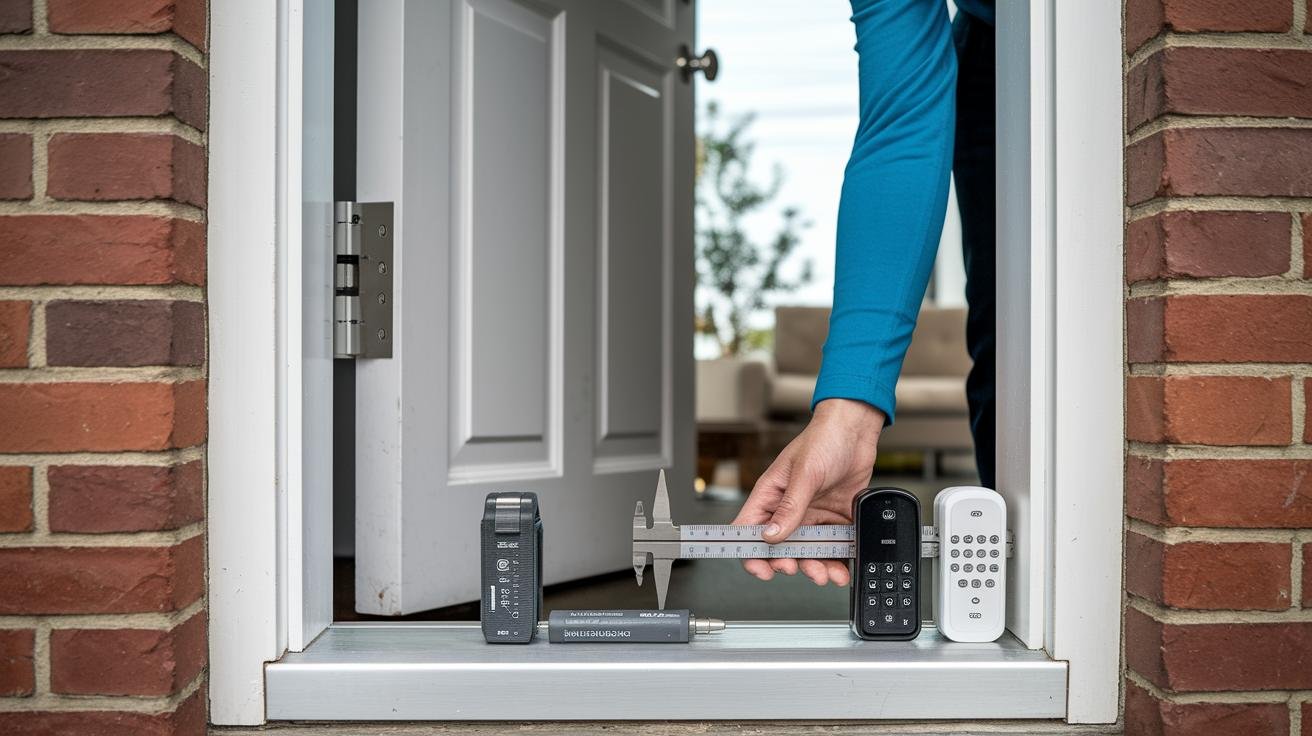
Getting your anti-theft smart lock on the door? Piece of cake. We’ve spent twenty years perfecting every hinge and sensor so you get that reassuring click every time. Let’s dive in.
Compatibility Check
First, check your door thickness, anywhere from 1 3/8 inches to 2 inches.
Then measure your backset (the distance from the door edge to the center of the hole): you should see 2 3/8 inches or 2 3/4 inches.
- Tools You’ll Need
- Phillips screwdriver
- Flathead screwdriver
- Power drill with 3-inch and 1-inch bits
- Tape measure
- Pencil or masking tape
- Latch reinforcement bits or metal rebate kit (extra security around the latch)
- Mounting screws (including 3-inch security screws)
- Replacement deadbolt (the bolt that slides into the frame to secure your door)
-
Full Replacement Deadbolt: Step-by-Step
-
Measure door thickness and backset. Double-check against the compatibility list in your manual.
-
Remove the old lock by unscrewing the interior assembly. Slide out the latch.
-
Push the new latch into the bore so the metal faceplate sits flush with the door edge. Solid.
-
Mount the keypad on the outside and the thumb turn on the inside. Tighten screws evenly so the cylinder (the part the key turns) aligns perfectly.
-
Open the companion app to calibrate the door-position sensor (detects open or closed state). Test lock and unlock twice.
-
Retrofit Kit Setup
- Align the adapter over your existing thumb turn, no extra drilling needed.
- Snap the keypad module on and tighten the clamp screws.
- Pair in the app. Set your PIN codes and auto-lock timing. Want a pro tip? Auto-lock at 30 seconds keeps you worry-free.
- Pro vs DIY Costs
DIY saves about $100 in labor and takes under an hour.
Hiring a pro runs $150 to $250 but includes a precise strike-plate upgrade and extra latch reinforcement. Worth it if you want zero stress.
Maintenance Tips
Keep your mechanical backup key close in case of power loss. Um, just saying. Inspect screws and test sensors every three months for that smooth LED glow and reliable security.
We’re CE certified (tested to strict safety standards) and have tried these locks in sandy deserts and snowy peaks. Back to your front door… you’re all set.
Smart Home Compatibility and Voice Assistant Support for Anti-Theft Smart Locks
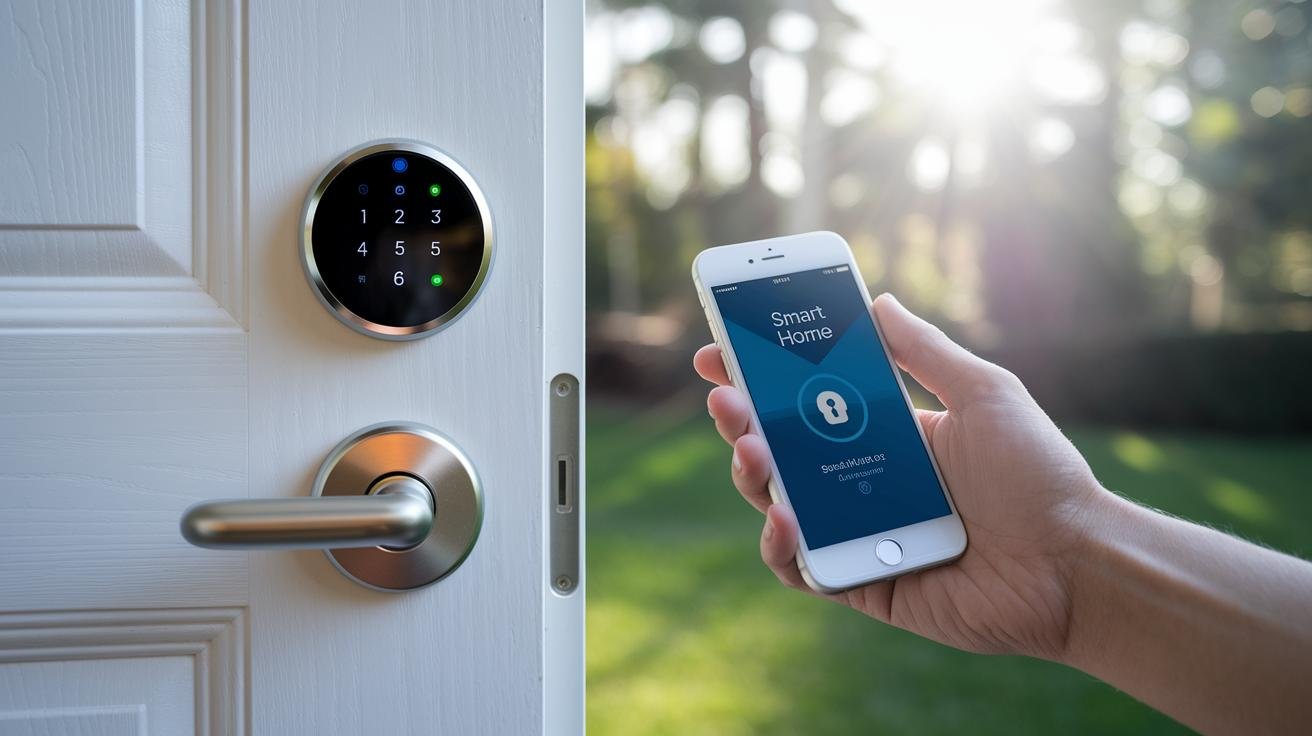
Schlage Encode and Encode Plus bring wide smart home support right out of the box. The Encode model connects to Alexa (Amazon’s voice assistant) and Google Assistant (Google’s voice helper). The Plus model adds Apple Home Key (tap-to-unlock using your iPhone or Apple Watch).
Solid.
Yale Assure Lock 2 works with Alexa, Apple HomeKit (Apple’s smart home system), and Google Home. You’ll need a wireless module (an add-on device for remote access) to unlock all features. And brands like Yale and August are planning Matter support (a new smart home language) by summer 2025.
Pairing is almost plug-and-play. In the Alexa app, tap Add Device, pick Locks, and follow the prompts to link your account. Google Home setup is the same: open the app, tap Add, choose your lock maker, then sign in. For HomeKit, scan the code under the battery cover and add your lock to a room in the Home app.
Now your lock joins lights, cameras, and more in one dashboard. A soft LED glow shows you the status. Hmm, want a secret? Adding it to routines feels like magic. You can lock at sunset without lifting a finger.
You can also set up IFTTT recipes (if-this-then-that automations) like “Lock front door at sunset” or “Unlock when you arrive.” SmartThings hub support lets your lock sync with lights and sensors for that extra sense of safety. Home Assistant integration even shows lock status on custom dashboards. And some locks send activity alerts to Nest Secure.
Matter support is on the horizon. It’s a game-changer.
Top Anti-Theft Smart Lock Models and Price Comparison for Homes
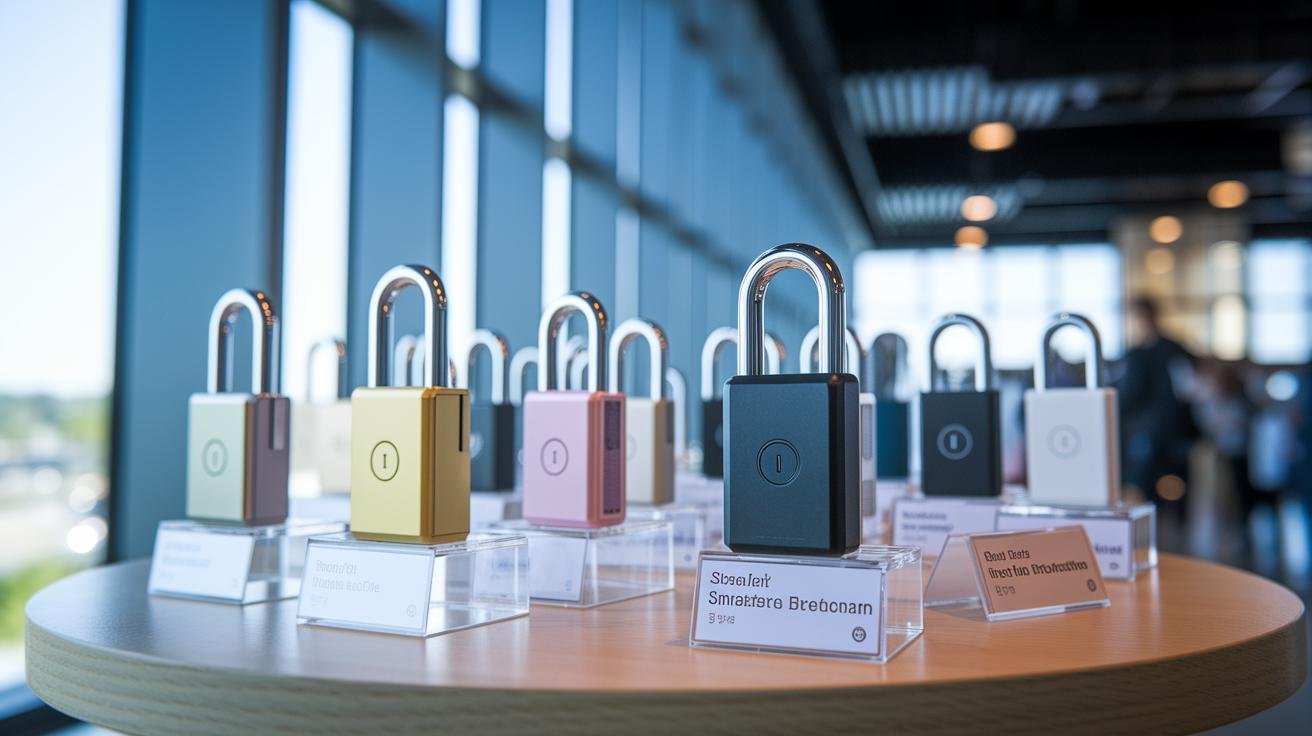
-
Ultraloq U-Bolt Pro (<$150): This lock has a smooth metal keypad (a panel for entering PIN codes) that stores six custom codes and a biometric fingerprint sensor (a reader that checks your unique fingertip pattern). IP65 weather resistance means it handles rain and dust without fuss. It plays nicely with Alexa and Google Assistant. No Apple HomeKit, but its low price makes it perfect for rental homes.
-
Schlage Encode Smart WiFi Deadbolt ($200–$220): Inside its heavy-duty ANSI Grade 1 housing, you’ll find physical buttons for PIN entry and an alarm that flashes a soft LED glow if someone tries to force it. Built-in Wi-Fi and a six-month battery keep you online without an extra bridge. It works with Alexa and Google Assistant. No fingerprint sensor or HomeKit support.
-
Yale Assure Lock 2 ($220–$250): Sturdy ANSI Grade 2 metal housing and DoorSense (a sensor that tells you if your door is closed) give peace of mind every time you lock up. You get a physical keypad plus a keyway backup in case you need it. This model plays well with Alexa, Google Home, and Apple HomeKit. Setup of the optional Z-Wave module can be a bit tricky.
-
August Smart Lock Pro ($180): Think of this as a DIY interior upgrade that snaps onto your existing deadbolt and adds DoorSense plus guest code expiration. The rechargeable battery and remote app control let you lock and unlock from anywhere. It fits with Alexa, Google Assistant, and HomeKit without swapping your exterior hardware. A tad bulkier inside, but truly easy to install.
-
Eufy Video Smart Lock ($300+): A built-in 2K camera records crisp video and stores it on the lock. You also get a fingerprint reader and a backlit keypad for PIN access. Motion detection pairs with Alexa and Google Assistant to send instant alerts. No two-way audio, but its visual deterrent is top-notch.
-
Lockly Visage ($280): This lock’s shifting keypad (numbers move to confuse peepers) and face recognition offer next-level entry options. Break-in safe mode gives a soft LED pulse, and you can add a wired door sensor for extra alerting. It supports Apple Home Key and major smart home platforms, and reliability is its strong suit. Customers rave about it.
Warranty, Support, and User Experiences with Anti-Theft Smart Locks
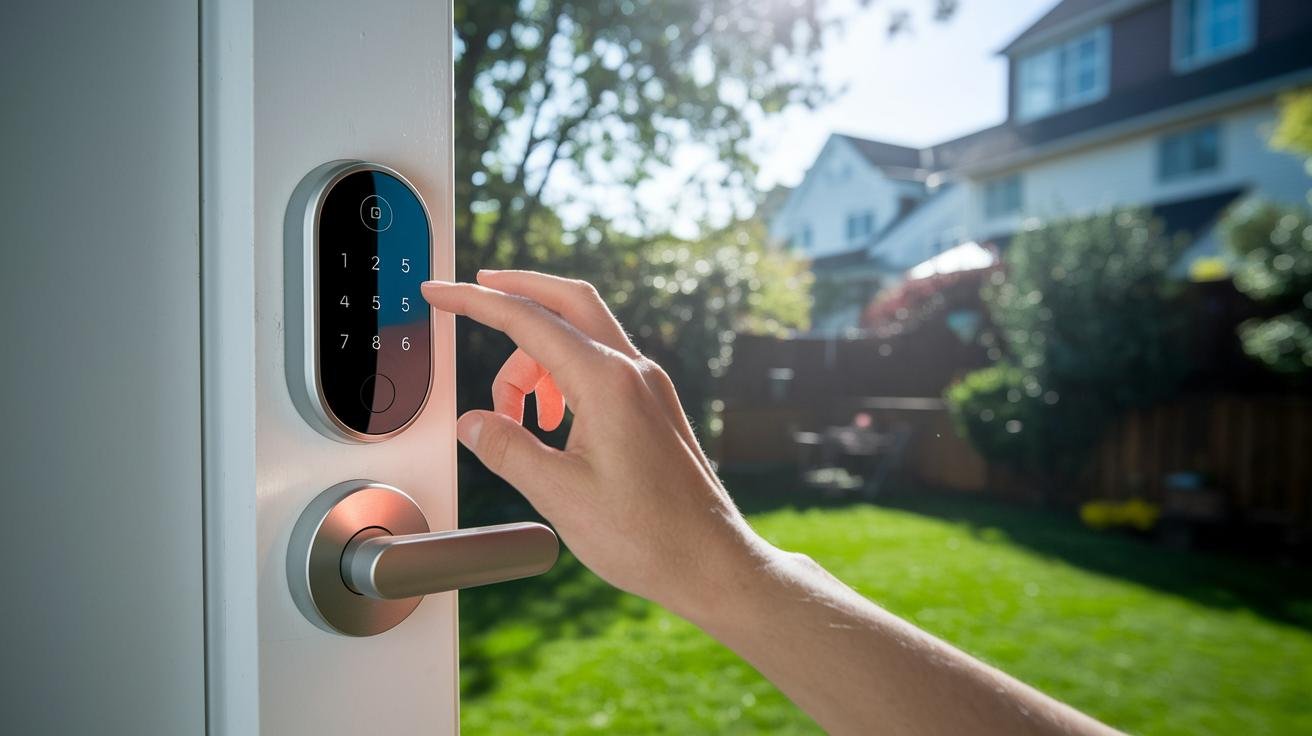
Most anti-theft smart locks ship with a one-year limited warranty. You can add extra years through an extended support plan for a small fee. Just register your lock on the maker’s website within 30 days of purchase to activate coverage. And remember, most brands let you return a new lock within 30 days if you change your mind.
Imagine hearing a reassuring click as the smooth metal faceplate snaps shut. Users say lock jams or app delays crop up only now and then. If you do hit a snag, the maker’s site has guides that walk you through a reset or a firmware update (a software patch that keeps your lock running smooth) and tips to dodge lockouts. Easy.
You also get an activity log that shows who came and went and when. Plus low-battery alerts so you can swap batteries or reset user codes before guests get stuck outside. Practical.
Some brands, like Aqara, offer quick keypad-hardware swaps at no extra cost when a defect pops up. False alarm reduction settings cut down on beeps and buzzes. And with regular firmware updates and friendly tech support, you’ll feel secure long after installation. Picking a brand with solid extended plans and a clear return policy takes the worry out of owning a smart lock.
Final Words
We jumped right into the nuts and bolts of anti-pry shield protection, tamper alarms, end-to-end encryption, and two-factor authentication. Then we compared deadbolt certifications, explored wireless app control, covered install steps, and ran through top models and support tips.
All these elements team up to block break-ins and simplify everyday life. Starlight Hardwares delivers an anti-theft smart lock for homes that blends strength, smarts, and seamless integration, keeping your space safe and your mind at ease.
FAQ
What are the best anti-theft smart locks for homes and where can I find reviews or models with key options?
The best anti-theft smart locks for homes include Schlage Encode, Yale Assure, Eufy, and Ultraloq. You can find reviews and models with key backup options on Amazon, where listings show detailed specs, customer feedback, ANSI Grade ratings, encryption details, and tamper-alarm features.
What features do popular anti-theft smart lock models like the Aqara U100, Yale Smart Lock, Keyless Entry Door Lock with Handle, and Eufy Smart Lock offer?
The Aqara U100 offers fingerprint access and ANSI Grade 3 security. Yale Smart Lock adds a keypad plus a keyway backup. Keyless-entry handles combine a touchscreen interface with a mechanical key override. Eufy Smart Lock includes video monitoring, a keypad, and offline PIN storage.
What is the most secure lock for a house?
The most secure house lock features ANSI Grade 1 and BHMA AAA certification, an anti-pry faceplate, end-to-end encryption, and two-factor authentication. Schlage Encode is a leading example that meets these standards.
Do smart locks deter burglars?
Yes. Smart locks deter burglars by showcasing visible metal shields, triggering tamper alarms, and using auto-lock features. They act as a strong visual deterrent and can sound sirens or send alerts during unauthorized entry attempts.
What are the disadvantages of a smart lock?
Smart locks can experience battery failures, app delays, or connectivity issues. They require occasional firmware updates and resets. Mechanical backup keys and low-battery alerts help prevent lockouts.
What happens to smart locks when power goes out?
Most smart locks run on batteries, so they continue working during a power outage. If batteries die, you can use the mechanical key override or a backup power port to unlock the door.
